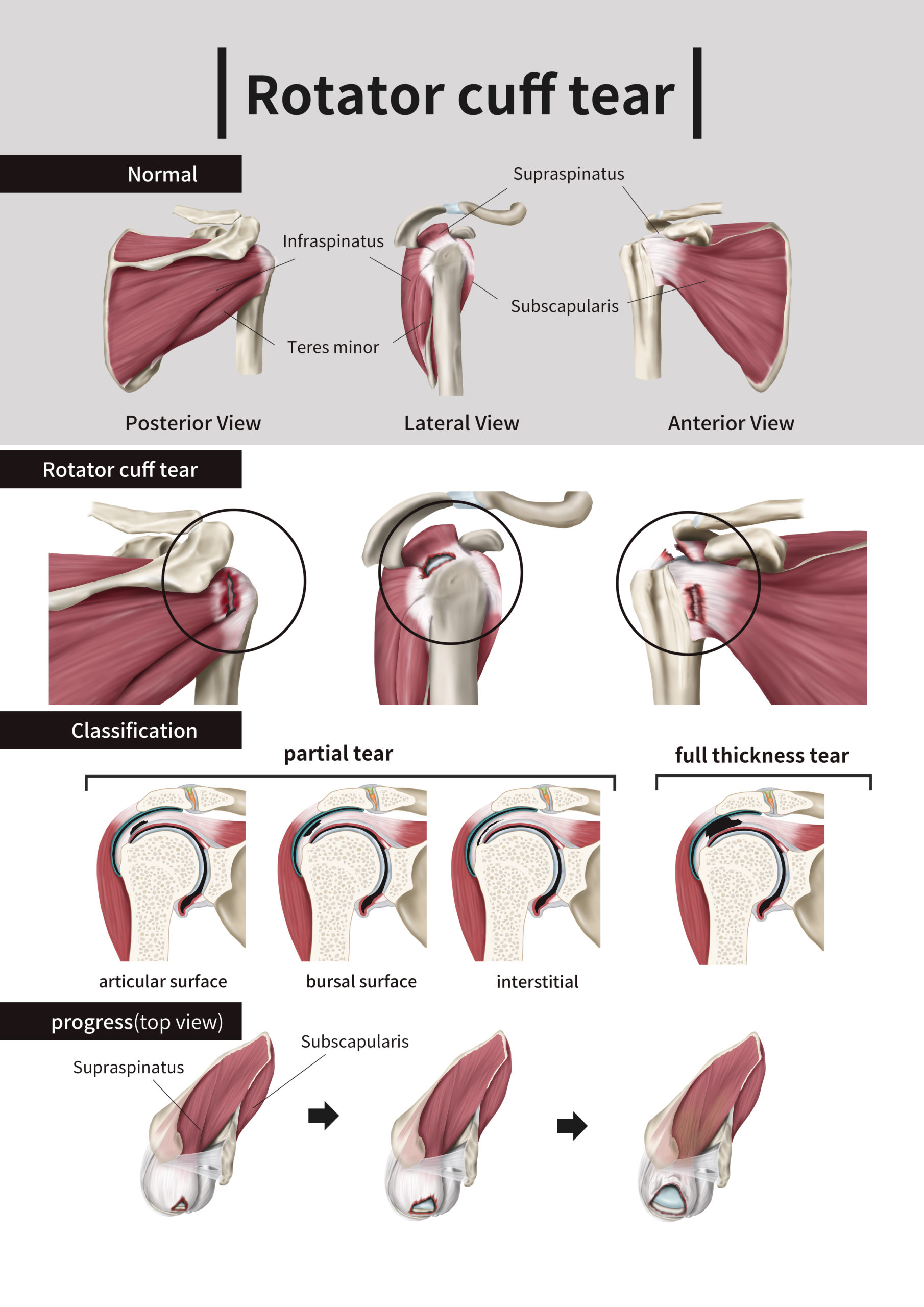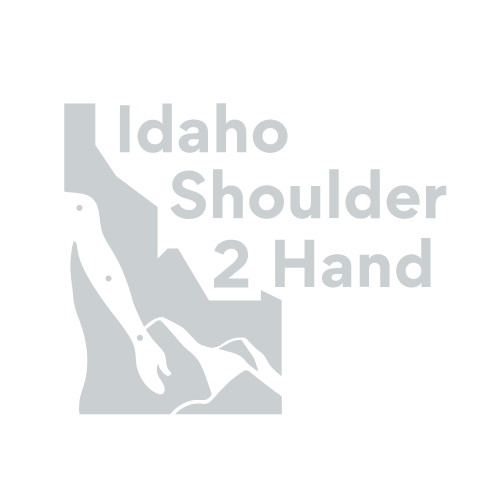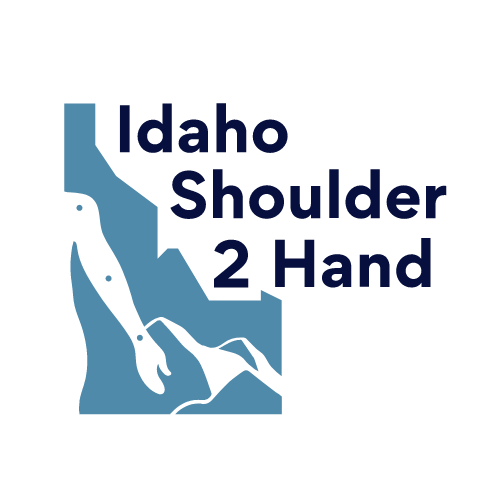Rotator Cuff Tears in Boise
Rotator Cuff Tears in Boise
Anatomy and Function of the Rotator Cuff
The shoulder joint is a ball and socket joint that connects the bone of the upper arm (humerus) with the shoulder blade (scapula). The capsule is a broad ligament that surrounds and stabilizes the joint. The shoulder joint is moved and also stabilized by the rotator cuff. The rotator cuff is comprised of 4 muscles and their tendons that attach from the scapula to the humerus. The rotator cuff tendons (subscapularis, supraspinatus, infraspinatus, and teres minor) are just outside of the shoulder joint and cover the shoulder joint and capsule from front, over the top, and around the back. The muscles of the rotator cuff help stabilize the shoulder and enable you to lift your arm, reach overhead, and take part in activities such as throwing, swimming, and tennis.

Rotator Cuff Injury and Treatment Options
The rotator cuff can tear as an acute injury such as when lifting a heavy weight or falling on the shoulder or elbow. The shoulder is immediately weak and there is pain when trying to lift the arm. A torn rotator cuff due to an injury is usually best treated by immediate surgical repair. The rotator cuff can also wear out as a result of degenerative (wear and tear) changes. This type of rotator cuff tear can usually be repaired but sometimes the tear my not need to be repaired and sometimes cannot be repaired. However, if the tear is causing significant pain and disability, surgery may be the best treatment to relieve pain and improve shoulder function. If a torn rotator cuff is not repaired, the shoulder joint often develops degenerative changes and arthritis many years later. This type of arthritis is difficult to treat and the longstanding rotator cuff tear may be irreparable. Unrepaired rotator cuff tears also can get larger over time further affecting shoulder strength and arm function.
Diagnosis of a Torn Rotator Cuff
Symptoms of shoulder pain that awaken you at night and weakness raising the arm are suggestive of a torn rotator cuff. Examination of the shoulder usually reveals weakness. The diagnosis can be confirmed by magnetic resonance imaging (MRI). A more sensitive test such as an arthrogram MRI or arthroscopy may be needed to diagnose a small tear or an incomplete partial tear of the rotator cuff.
Description of Rotator Cuff Tears
The majority of rotator cuff tears occur at the tendon attachment on the humerus. Rotator cuff tears come in a variety of configurations. Size refers to how big is the tear and is measured in centimeters; in other words, does it involve one, two, three, or all four of the rotator cuff tendons. Partial tears are those that involve one or more rotator cuff tendons but refer to the thickness of the tendon; in other words, the tendon attachment is not fully detached from the humeral attachment area. This measurement is described as a percentage of the overall thickness of the rotator cuff tendon. A partial tear can also be interstitial; this is a tear that happens within the thickness of the tendon and not on the outside (bursal) or joint side (articular) side. A complete tear is one in which some part of the rotator cuff is fully detached from the humeral attachment; in other words, the tear extends from the articular side through the bursal side and leaves a gap between the rotator cuff and humerus attachment. Retraction of the rotator cuff is measured in centimeters and refers to the distance from the tear to the attachment point on the humerus; in other words, how far from the attachment point has the tendon pulled away. Lastly, one describes the quality of the muscle of the torn rotator cuff as either normal, with atrophy, or with fatty degeneration. This descriptive measure is made by MRI evaluation. Normal muscle refers to a proper size, shape, and color. Muscles with atrophy have lost size and shape yet retain their normal color. Muscles with fatty degeneration have lost size, shape, and normal color. Fatty degeneration is a permanent and irreversible change in the muscle.
Open versus Arthroscopic Repair
Rotator cuff repair can be performed both arthroscopically and via an open technique. Sometimes, both techniques are combined. Although most rotator cuff tears can now be fixed through the minimally invasive arthroscopic technique, sometimes an open repair is required or preferred. Regardless of technique, the average time to regain normal functional use of the repaired shoulder is minimum of 5-6 months. It can take up to one year to gain full strength and functional recovery.
Factors Affecting Healing and Outcomes after Surgery
Many factors determine the healing and end outcome of surgical repair after rotator cuff tear. These factors include:
- Age of patient
- Age of the tear
- Size of tear
- Retraction of the tear
- Acute versus Degenerative tear
- Quality of the Rotator cuff muscle
- Quality of the Rotator cuff tendon
- Medical Co-morbidities: Diabetes, Obesity, Kidney disease, Liver disease, etc.
- Smoking

